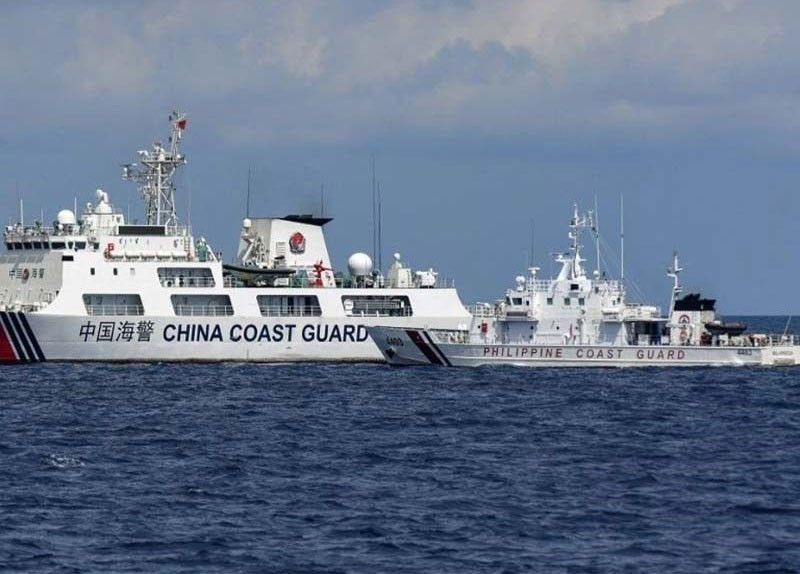The Philippine Navy has observed a significant increase in the number of Chinese military vessels in the West Philippine Sea (WPS). According to recent reports, the number of People’s Liberation Army Navy (PLAN) ships in the area has nearly tripled. Nine PLAN vessels were spotted in various locations, up from only three in the past few days.
Three of these vessels were seen near Escoda (Sabina) Shoal, two around Pagasa Island, and one each near Ayungin Shoal, Likas Island, Patag Island, and Del Pilar (Iroquois) Reef.
Increased Chinese Presence in West Philippine Sea
While the number of PLAN ships has increased, the number of Chinese maritime militia vessels has decreased. From July 30 to August 5, there were 106 maritime militia vessels in the WPS. However, this number dropped to 68 between August 6 and 12.
On the other hand, the presence of China Coast Guard (CCG) boats in the WPS has risen. The Philippine Navy reported that 13 CCG vessels were spotted during the same period, compared to fewer in previous weeks. Five CCG vessels were seen near Ayungin Shoal, three in Panatag Shoal, three in Sabina Shoal, and two near Pagasa Island.
Decrease in Overall Chinese Vessel Numbers
Despite the increase in PLAN and CCG ships, the total number of Chinese vessels in the WPS has actually decreased. The Philippine Navy reported that the total number went down from 122 to 92.
In addition to the military and coast guard vessels, two Chinese research vessels were also sighted. One was roaming the waters around Ayungin Shoal, where the grounded BRP Sierra Madre remains. The other was seen near Patag Island.
Philippine Military Responds to Chinese Aggression
The Armed Forces of the Philippines (AFP) has vowed to remain resolute in the face of heightened Chinese aggression in the WPS. Last Thursday, Chinese jets dropped flares in the path of a Philippine Air Force plane patrolling over Panatag Shoal. This incident has not deterred the Philippine military.
Rear Admiral Roy Vincent Trinidad, Philippine Navy spokesman for the WPS, stated that these flares have only strengthened the resolve of the AFP. “We will not be deterred from continuing to perform our mandate of securing the integrity of the national territory,” Trinidad said.
Trinidad also criticized the actions of the Chinese jets, calling them “uncalled for, unprofessional, and unsafe.” He emphasised that such actions are in total disregard of international law and are both illegal and aggressive.
Diplomatic Protest Filed
In response to the incident, the Department of Foreign Affairs (DFA) has filed a diplomatic protest. DFA spokesperson Ma. Teresita Daza confirmed the filing but did not provide specific details. She reiterated that the Philippines remains committed to diplomacy and peaceful means of resolving disputes.
Daza also emphasised that the Philippines adopts a de-escalatory approach to tensions in the West Philippine Sea. The government continues to seek peaceful solutions to the ongoing issues in the region.
U.S. Assistance in Surveillance
In light of the increasing Chinese presence, the United States has been providing assistance to the Philippine military. Brig. Gen. Aldrin Anani, Western Mindanao Command (Westmincom) deputy chief for external defense, confirmed that the U.S. military has been helping with flight surveillance.
The U.S. Special Operations Task Force 511.2 has been conducting both unmanned and crewed air surveillance missions. These missions have been crucial in detecting the intrusion of foreign vessels, including Chinese naval ships.
Anani highlighted the importance of U.S. assistance, stating that their air surveillance has been instrumental in monitoring the movement of Chinese ships. The U.S. reports these movements to the Philippine military, which then takes appropriate action.
Way Forward
The situation in the West Philippine Sea remains tense as China increases its military presence. However, the Philippines, with the support of the United States, remains committed to protecting its territorial waters. The AFP continues to perform its duties despite the challenges, and diplomatic efforts are ongoing to resolve disputes peacefully.

